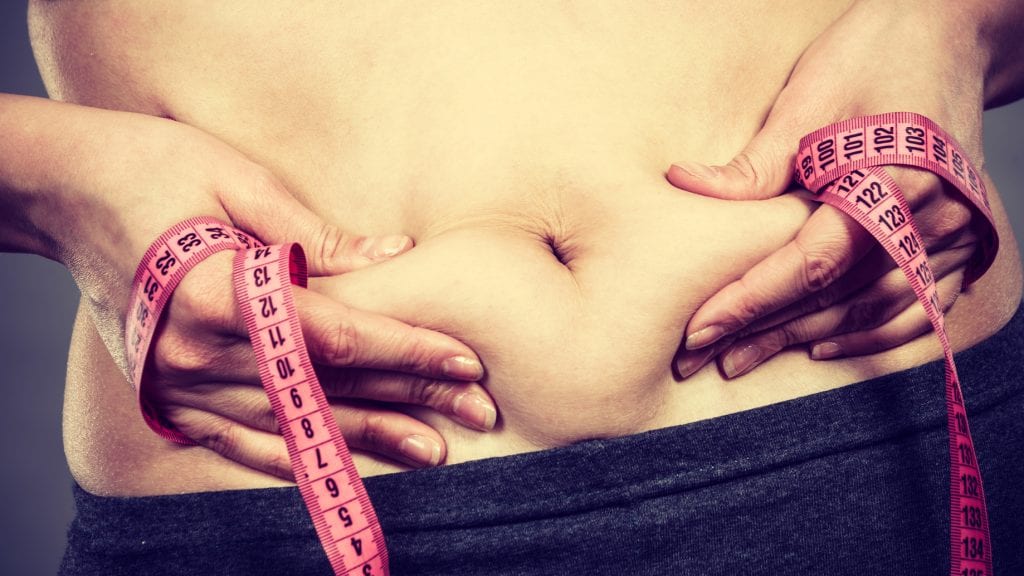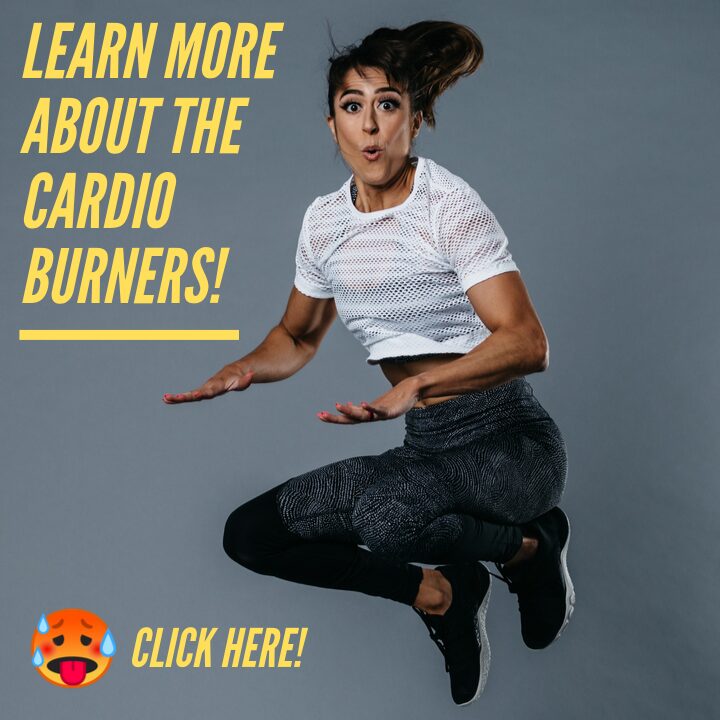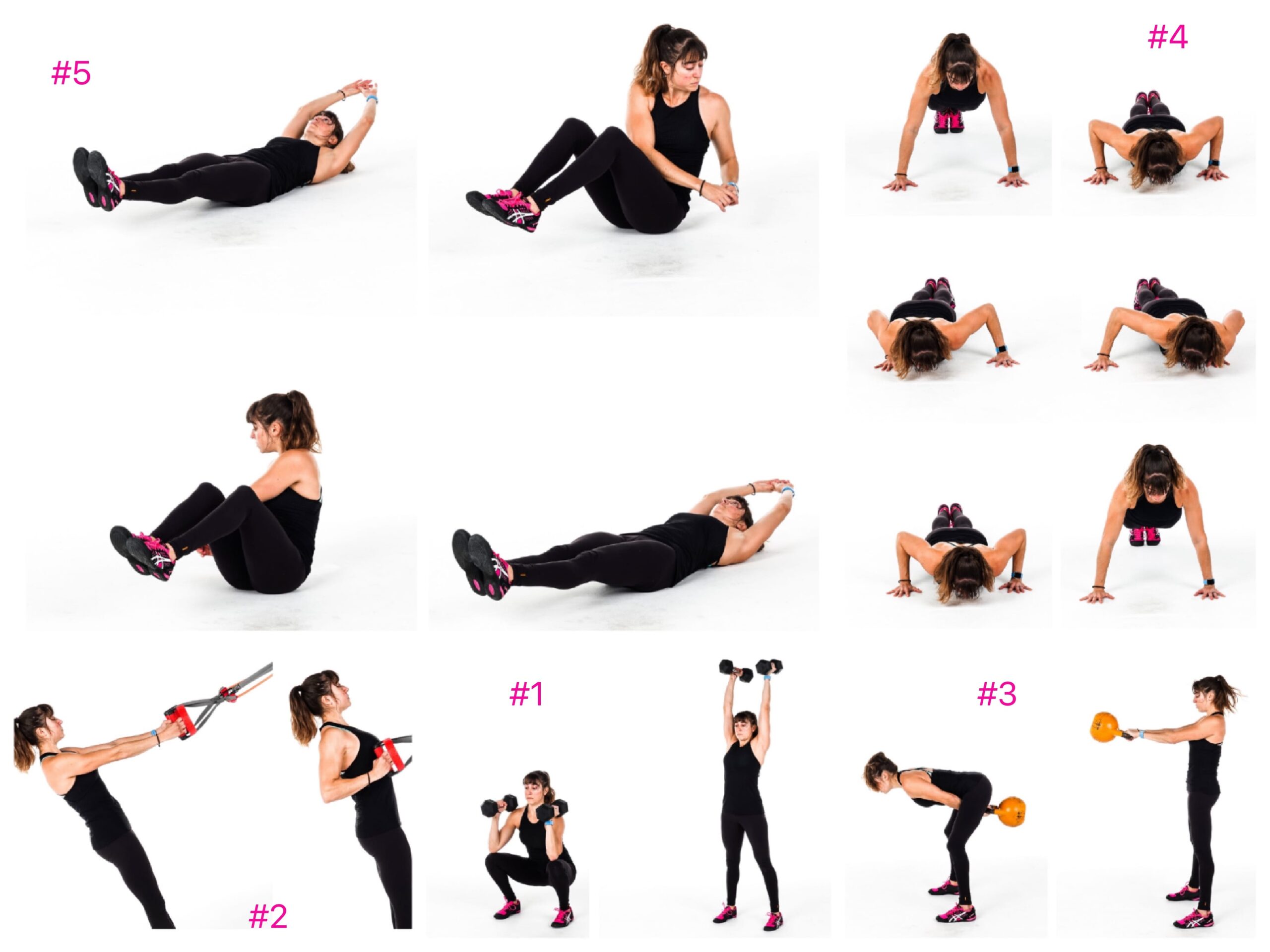
Cardio workouts…love them or hate them they are an essential part of a proper training routine.
However, there are a few “myths” about cardio training that I want to clear up.
I also want to share some great tips to help you get more out of your cardio workouts because less rest? Well it isn’t always better!
Here are 5 tips to help you get more out of your cardio workouts!

Topic #1: Cardio Has To Mean Running, Biking Or Going On A Cardio Machine For Hours

If you love running for long distances or cycling or going on the elliptical for hours, I won’t tell you not to.
Can steady-state cardio be CATABOLIC to muscle tissue?
Actually, yes.
So those long distance runs can actually hinder muscle gaining efforts. Which in turn can actually HINDER your weight loss results…More on this in a bit though.
But why I really mention this is not to scare you off of those cardio activities, but to explain that cardio should NOT only means those steady-state activities to us.
Honestly, you don’t have to do ANY of those things to improve your cardiovascular health and lose weight.
Cardio workouts are really on more of a spectrum with long distance, steady-state activities on one end and heavy, one rep max lifts on the other.
Yes, I know we don’t often consider strength training to be “cardio” but guess what? It works our cardiovascular system too just in a different way.
Cardio can build strength and strength training can be cardio!
It doesn’t have to be either or and it is important we realize this so we can design workouts that not only get us better results, but also FIT OUR SCHEDULES!
So when you think of cardio, you want to think of including workouts across a spectrum.
And this is why it is also key you include workouts with not only a few different workout designs but even different intervals of rest to work!
Topic #2: Cardio For Weight Loss and The Myth Of The Fat Burning Zone

When a client comes to me wanting to lose weight, one of the first questions I usually get asked is…
“Should I increase my cardio?”
Very often my answer is, “Well, you can if you enjoy it.”
But the real answer is “NO. You don’t need to increase your cardio, at least not the cardio they often mean, if your goal is weight loss.”
And this is something I go over in more detail in my Cardio Burner program.
First off, as most of us have heard, DIET IS KEY.
But in terms of using our workouts to add in weight loss and body recomposition, building muscle is oh so freaking important.
And cardio? Especially endurance cardio?
Well it can be catabolic to muscle tissue. AKA cause you to struggle to gain, and even RETAIN, muscle mass.
Guess what ACTUALLY helps you lose fat?
INCREASING YOUR MUSCLE MASS!
Guess what ACTUALLY helps you look leaner as you lose weight?
INCREASING YOUR MUSLCE MASS!
Because muscle increases the calories you burn even at rest, helping to expedite your results from dialing in your nutrition.
Now what about working in that magical “Fat Burning Zone?”
If you’re burning more fat by doing that LISS or low intensity steady state cardio, of course you would want to at least include some form of that, right?!
While LISS does have it’s benefits, and I believe a great one is stress relief when you’re out for a walk with friends, it does not actually, truly burn more fat than interval training or even weight lifting workouts.
The MYTH of the Fat Burning Zone arose from the fact that, of the calories you burn, you burn a higher percentage of calories from fat when you do this steady-state cardio.
Now you may be thinking…”But I thought it was a myth!?! You just said you DID burn more fat!”
Take a look at what I truly said – You burn a higher percentage of calories from fat.
So if you burned 100 calories, when doing steady state cardio, you may burn 50% from fat. Whereas of that same 100 calories, you would only burn 35% from fat if you did a higher intensity cardio workout.
However, here is the reason that magical Fat Burning Zone is a myth…You also burn FEWER calories doing LISS.
Doing a higher intensity workout is going to results in a higher calorie burn and often even do so in less time.
35% of 200 calories burned results in more fat burned than 50% of 100…
So if your ultimate goal is burning fat, increasing your intensity, aka NOT working in that Fat Burning Zone, can result in even more fat burned during your workout.
But again…It’s key that we don’t just think of cardio as steady-state endurance activities, but as a spectrum that we work across.
We need to include workouts that are not only cardio but also build strength so we can build that lean muscle that will help us burn more calories at rest and have a GREATER impact on our weight loss results!
Topic #3: Less Rest Is Better – NOT!

One of the few times I got mad at a client was when they cut out the rest I’d scheduled into their interval workout for them.
They said they wanted to make the workout “harder.”
This is when I really started EDUCATING and not just programming workouts for clients.
We need to understand that….
A. Harder isn’t always better and doesn’t mean better results.
B. Adjusting rest CHANGES the energy system we are working in AND affects our work output.
Guess what happens when you eliminate rest?
You don’t give yourself a chance to recover.
So over time your work output, you INTENSITY, decreases.
And this isn’t always a bad thing.
Workouts where you push through fatigue and shorten rest to work on recover CAN and SHOULD be included in your workouts.
But so should workouts with MORE REST, where you can more fully recover so each interval of work is more explosive, powerful and intense.
When there is more rest included, instead of eliminating it, use it to go HARDER each and every round.
I tell clients that if they think a rest interval is “too long,” they need to push harder during that interval of work.
You should NEED that rest. And WANT that rest if you’re using the interval of work correctly.
If you want to say…set a personal record in your next half marathon…you can’t just train endurance. You’ve also got to train speed.
And training speeds means not training slowness.
Sounds weird right?
But what that means is if you run sprints when fatigued, you’re going to go slower.
Guess what that does? It trains slowness.
You want to REST so you can train at the speed you want to work toward.
You want to TRAIN SPEED.
So next time you think about cutting out rest to make something harder…reconsider what you’re doing and why the rest was included in the programing first!
Topic #4: Use Different Types Of Rest

Often another reason we eliminate rest is because we are short on time.
We need to fit more into our crazy, busy schedule and resting, aka standing around, feels like a waste.
However, rest doesn’t have to mean standing around. There are lots of different “types of rest you can use.
And this is why it is key you consider your current fitness level, goals and even SCHEDULE when you design your workouts.
Too often we design workouts that are hard but then don’t consider whether or not they are REALISTIC to implement.
Your workout design should be determined, in part, by your schedule!
That means picking workout designs, even like timed circuits or density sets, that help you pack in what you need while still allowing you to work and REST as you should.
So what are these different types of rest?
Well there are two basic ones many of us have heard about…
- Full Rest – Yup…standing around or walking around to allow our body to fully recover.
- Active Rest – Doing some activity, usually a lower intensity cardio move that allows our heart rate to come down closer to a resting rate.
But here is where we aren’t using ACTIVE rest to it’s full potential.
It isn’t only lower intensity cardio moves.
It can also be mobility work between sets, ISOLATION moves or even simply WORKING A DIFFERENT BODY PART!
When you design a circuit, you can eliminate some full rest, by alternating the areas that are worked.
Often in timed circuits and density sets where the goal is to keep moving the entire time, you can allow areas to rest by changing the body part or hemisphere worked.
For instance, do a jump squat and then a push up.
Your lower body will get some rest as your upper body works.
You can also vary the INTENSITY of the moves you use.
This is where moves like CRUNCHES and some isolation exercises even come into play.
If you do a burpee, squat jump, push up and then a CRUNCH, you are not only varying the areas that are worked, but you’re also moving from a more intense move to a less intense move.
During that crunch you are still working, but you’re giving your body a chance to bring your heart rate down!
I love using different types of active rest so that you can take your full rest interval, say of 20 seconds, and make it actually 40 seconds in a 20/20/20 workout design simply by adjusting the intensity of the moves and even the areas worked!
Topic #5: Focus On Compound And Hybrid Moves

If you want to get your blood pumping in a short interval of work, you need to use moves that will work more muscle groups in that short amount of time.
I’ve seen clients pick more isolated moves and then believe that 20, or even 10 seconds, is just too short an interval to ever get their blood pumping.
And…well…they are right if they don’t pick the right moves.
The key with cardio is to pick moves that match the intervals of work to rest that you use.
If you’re doing a more “endurance,” or aerobic workout, you may not pick as challenging a move as if you’re doing a shorter, higher intensity interval workout.
You’ve got to figure out the intensity you want to work at and your goal for the workout.
But, in general?
Pick compound or hybrid movements to get your blood pumping in a short amount of time.
Here are some of my FAVORITE cardio moves:
- 20 Bodyweight Home Cardio Moves
- 18 Dumbbell Cardio Moves
- AHEM – 24 Low Impact Cardio Moves
- 24 Hybrid Cardio Exercises
- 18 Kettlebell Cardio Moves
They can be WEIGHTED or bodyweight moves (I’ve linked to both types above).
Heck, you can combine BOTH into a single routine even. It doesn’t have to be either or!
And if you DO include isolation moves, you’re going to want to include them more as active rest.
Bicep curls…well…they don’t really have much of a place in your cardio workout.
Note I didn’t say they should NEVER be included, but if you want better results in less time?
Focus on those moves that give you more bang for your buck!
If you want to learn even more about designing a proper cardio training routine as well as get some KILLER cardio workouts, check out my Cardio Burner Program!


